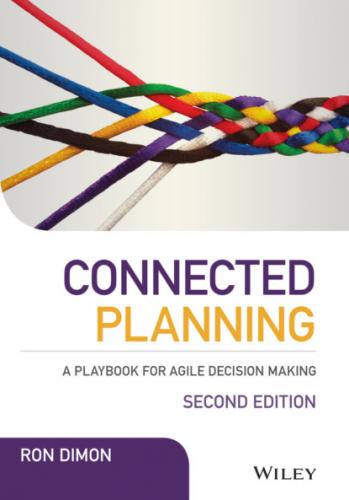According to Roger Martin, Dean of the Rotman School of Management at the University of Toronto, in his article “The Execution Trap,”4 as operational and frontline employees have to make decisions every day involving customers and operations, they become de facto strategists. Or, in my view, at least de facto strategy executioners, and I don't mean they have to kill the strategy!
Imagine if your number-one strategic objective is “profitable revenue growth,” and the target is 10% year-over-year improvement in both revenue and operating margin. Also imagine that every employee knows this—they even have it written on a laminated card they carry around in their wallets and purses. And then one of your customer service reps gets a phone call from an irate customer. Typically, the customer service rep is measured on customer satisfaction including low call time, low time-to-resolution, high marks on the net promoter score scale for each interaction, and so on. But what if the phone call from the irate customer was accompanied by a dashboard that automatically popped up on the customer service rep's screen that showed:
Customer lifetime value (CLV) (how much the customer's company had spent on your products and services) was 50% lower than the average CLV.
Cost to serve (the amount spent on support, maintenance, returns, etc.) was 50% higher than the average cost to serve.
Overall customer profitability was ranked in the bottom 10% (this customer was very good at negotiating deep discounts on prices during the end-of-quarter sales cycle).
What would your customer service rep do? Would you want them to treat the irate customer as any other customer and invest the time and money to solve their problem or concern? Or would you want the customer service rep to forward the customer call on to a special help desk that, in line with your number one strategic objective, would “fire” this customer?
We need a better decision-making and resource-deployment process because business-as-usual is over. In its place we have a faster-paced, rapidly changing world, including:
A need to be more agile, more responsive, and more tolerant of uncertainty
Better-informed customers
Changing market and business models
Structural changes in the economics of business
Regulatory revolution
Growth through acquisition as the normal course of business
Redefining asset values
Changing delivery channels
Vast new information sources
Compressed cycle times
And those compressed cycle times impact the entire business:
Time to market for new products and services (concept to realization)
Time to deliver to the customer
Time to close the books
Time to hire new staff
Time to deploy new staff (on-boarding)
Time for new staff to reach full productivity
Time to make key decisions
Time to complete major business transactions
Time to obsolescence for equipment and products
Time to integrate acquisitions
Time to respond to competitive actions
Time to return on investment (ROI) (especially for new technology investments)
Time to enter a new market5
Connected planning is one way to fill this strategy-to-execution gap. It helps everyone in the organization keep their eye on the prize and see how their performance is connected to the whole organization's performance.
Buckets of Pain
In working with my clients across a wide spectrum of business sizes, industries, and geographies, when it comes to barriers of improving performance, there are some “buckets” of pain I have found common to them all:
More time is spent on assembling the numbers than on analyzing them—all this manual effort makes us inefficient and not very scalable.
People show up to meetings with “their” numbers, and we don't know how they got those numbers—there is not a lot of confidence.
Some people aren't getting the reports or analyses we're sending out—it either gets lost in their email or the right people aren't on the distribution list (or they're ignoring it).
There is little alignment across functions (Sales, Marketing, Development, HR).
People aren't following the prescribed processes, especially for submitting their plans and forecasts—they make different assumptions and interpret what we want differently.
The right people don't have access to the right information, at the right time.
Sometimes the data is just plain wrong—it doesn't include the latest numbers or it's an old version, or it's missing parts.
There is a frustrating amount of “reinventing the wheel” and lack of coordination across teams—a group will create a process or system without knowing that there's already one in place.
The reports are static and users can't interact with them—there's no depth (drill-down) or slice-and-dice.
Sometimes their reports, plans, analyses, and models are just too complex to understand or believe—rules and transformations have been added on over the years unchecked and not auditable.
Some of their key measures don't even have targets, so how will they know how they're doing? And where they do know, they're not sure who's responsible for the variance.
People are working from different definitions (of customer, of employee, of revenue) and different formulas, making it difficult to compare apples to apples.
They have data timing problems (e.g., daily sales, monthly expenses).
They are living in “spreadsheet hell.”
These buckets of pain can be further summarized as a lack of foundational business elements as shown in Table 1.1.
Table 1.1 A Summary of the Buckets of Pain
| A lack of … | |
|---|---|
| Believability | I don't trust the numbers, also known as “one version of the truth” or data quality issues. |
| Visibility | I can't get to the numbers I need, when I need them, at the right level of detail, or they aren't fresh enough. |
| Focus | I have too much data and not enough actionable information. |
| Alignment |
We are not on the same page regarding the drivers of the
|
